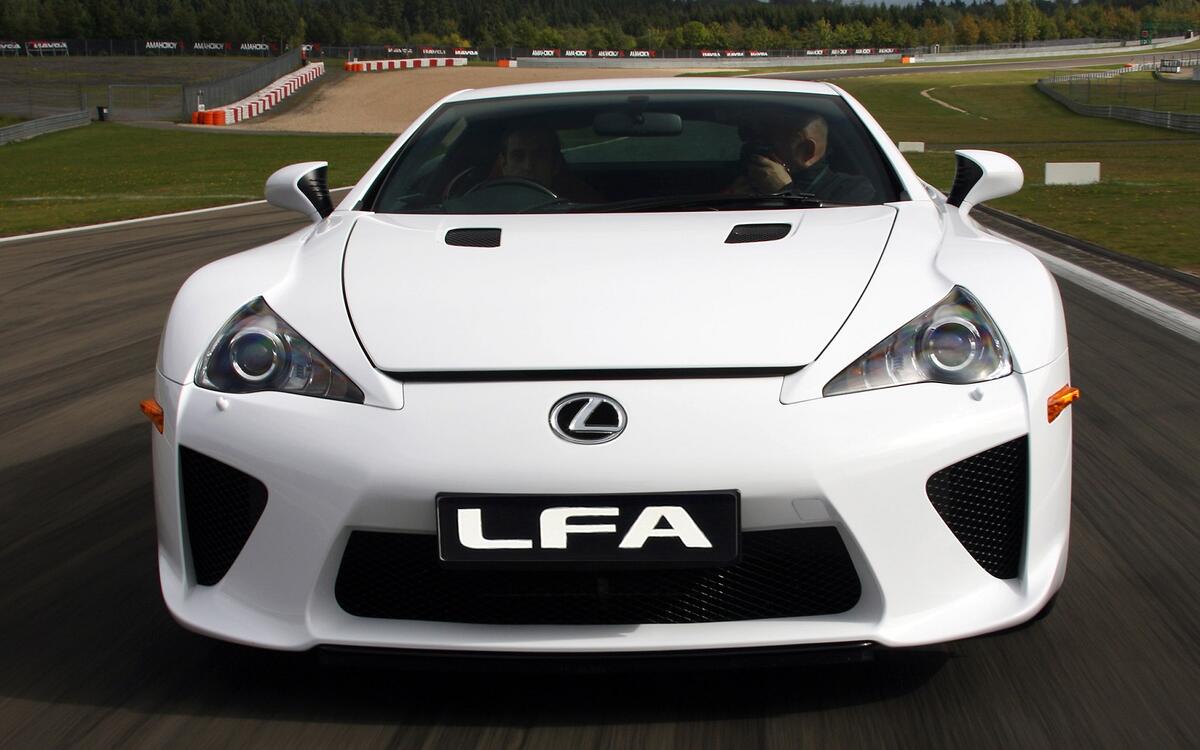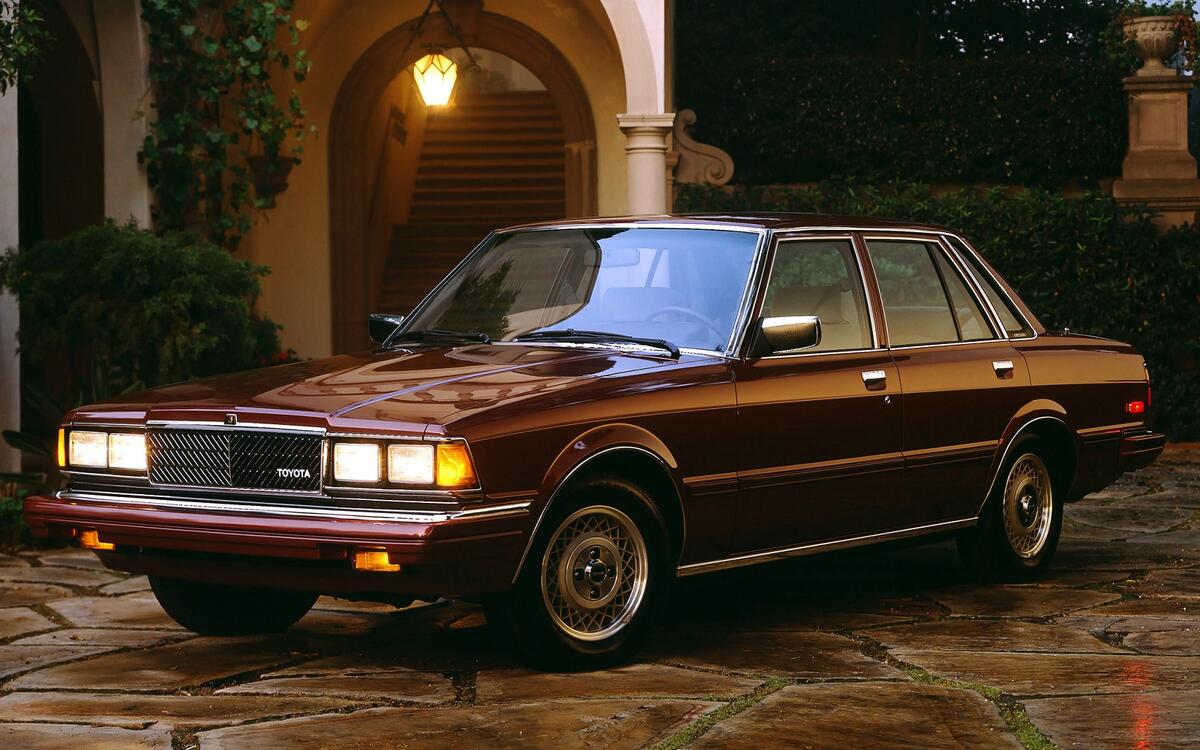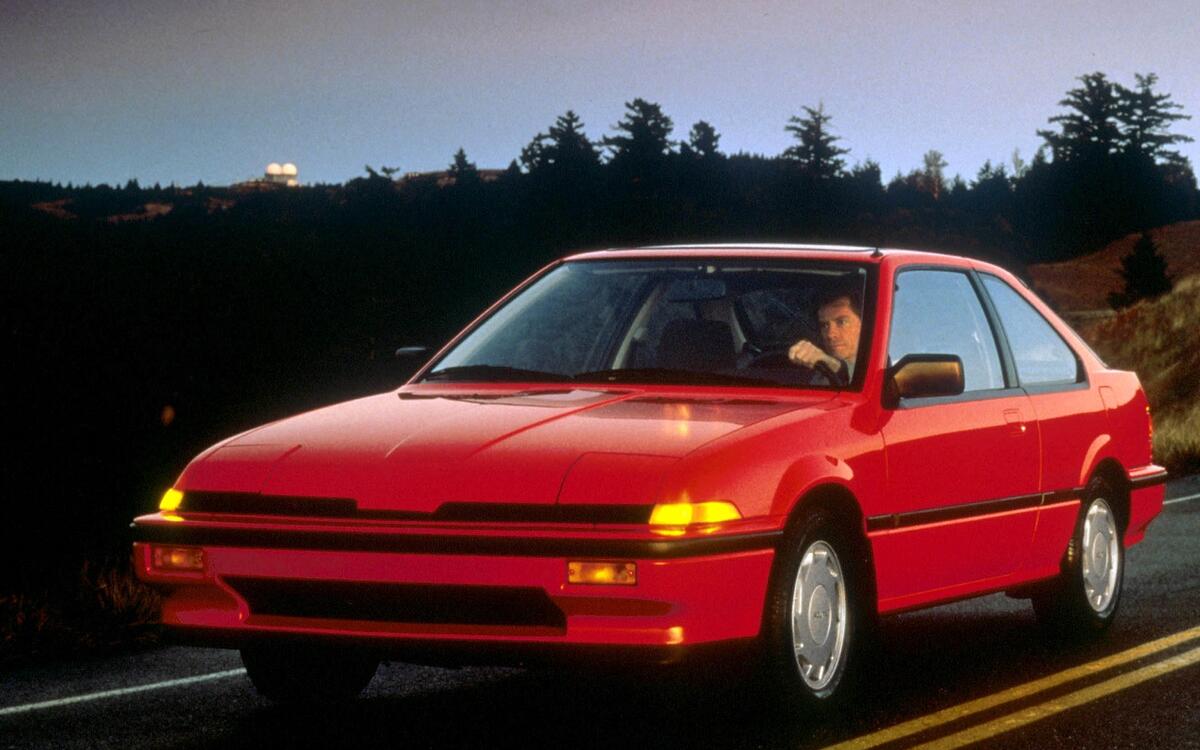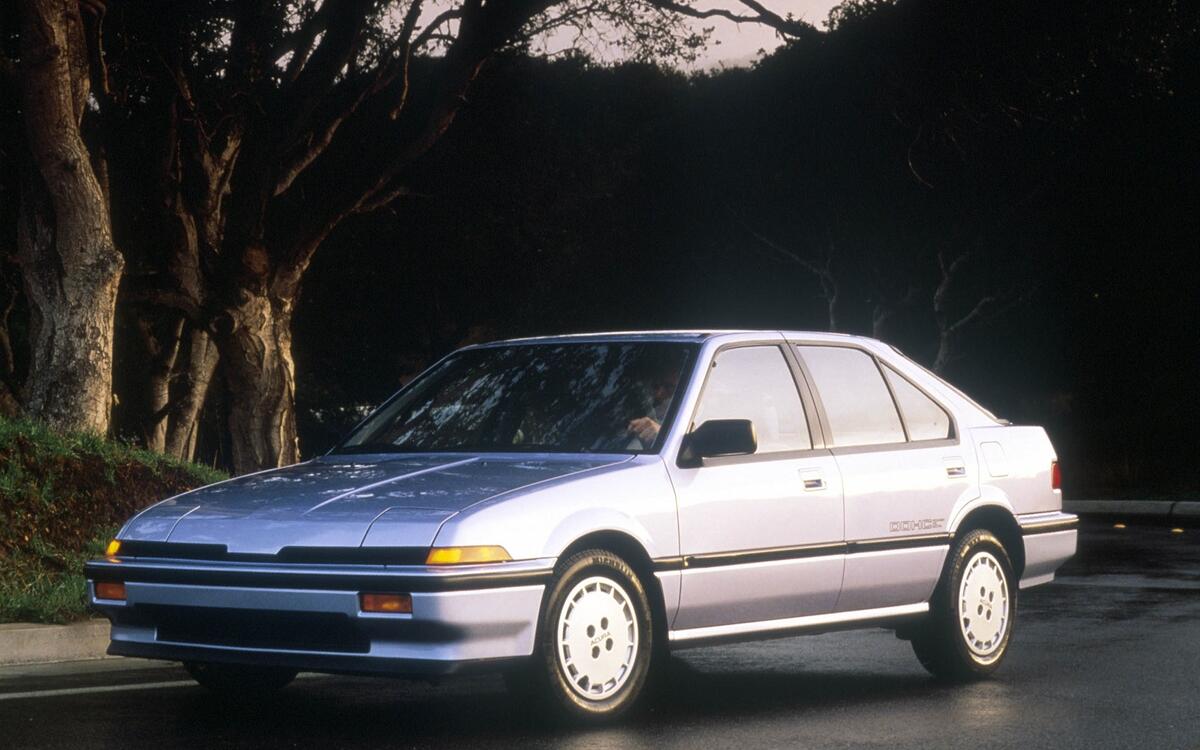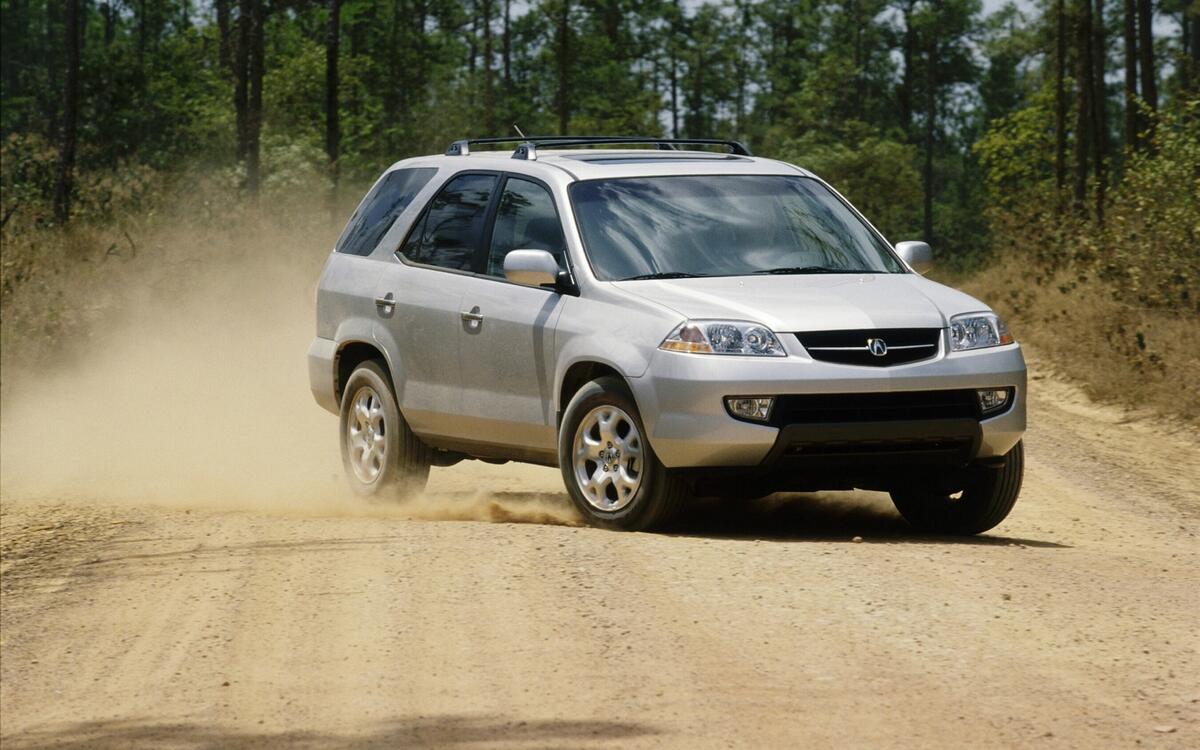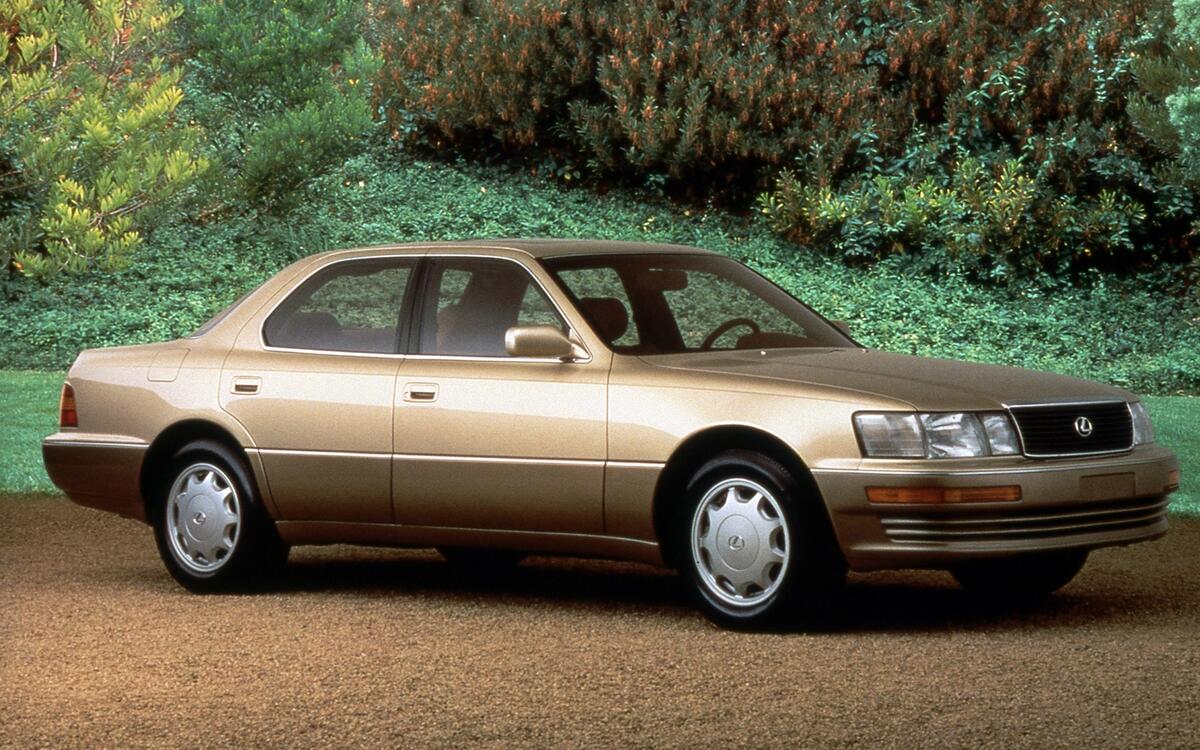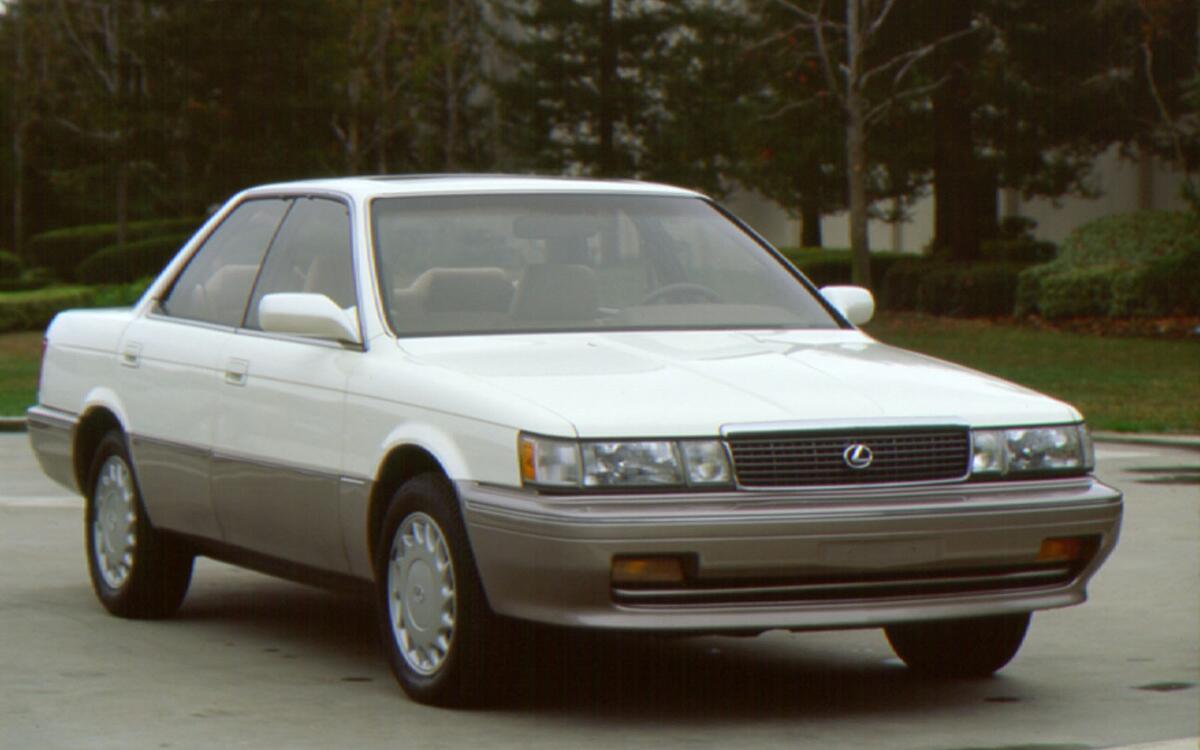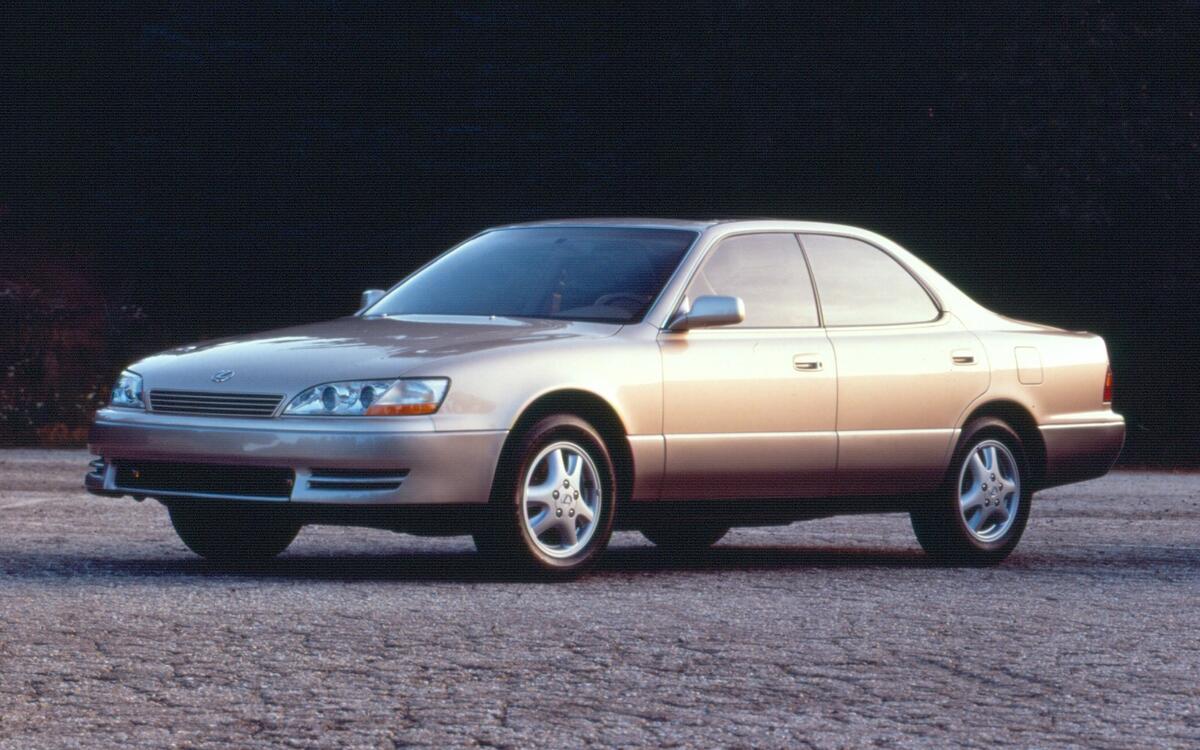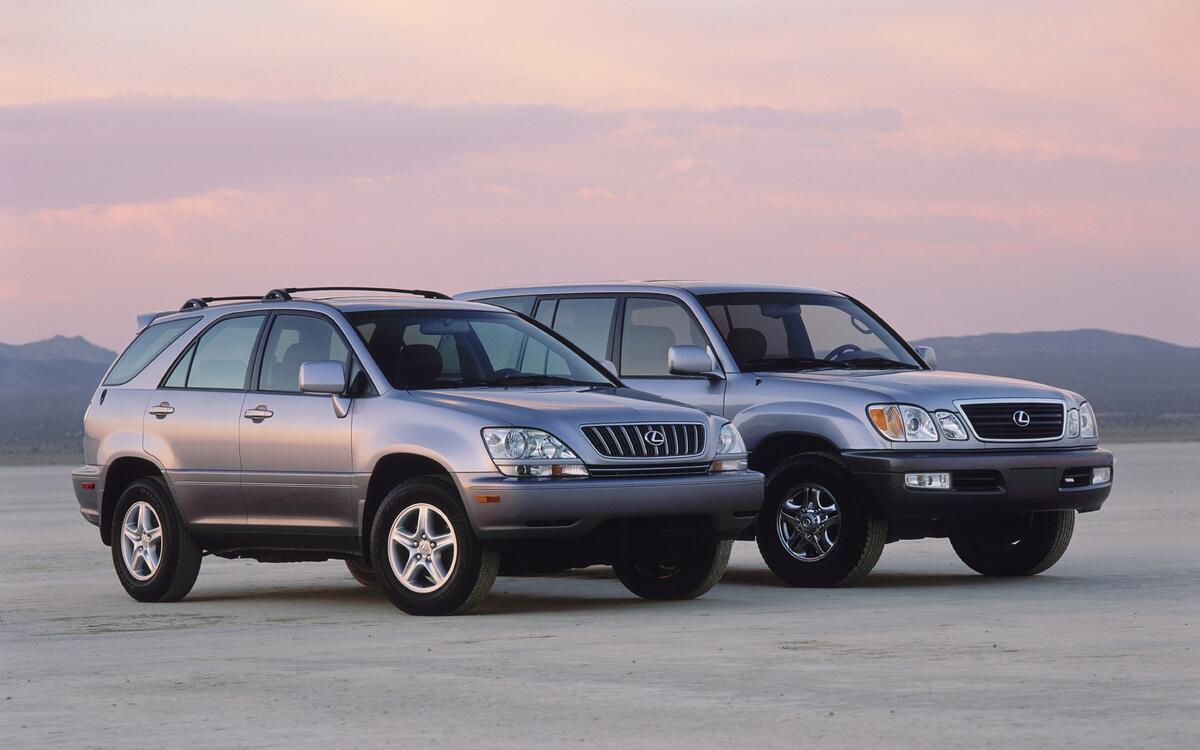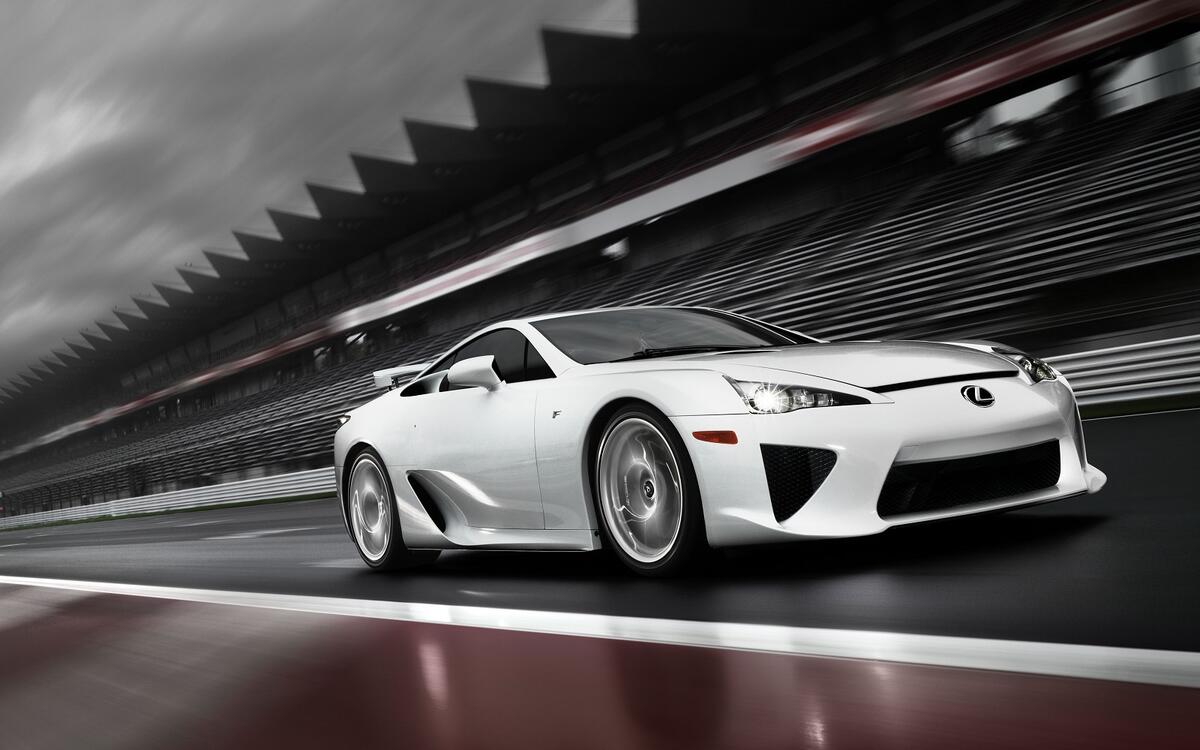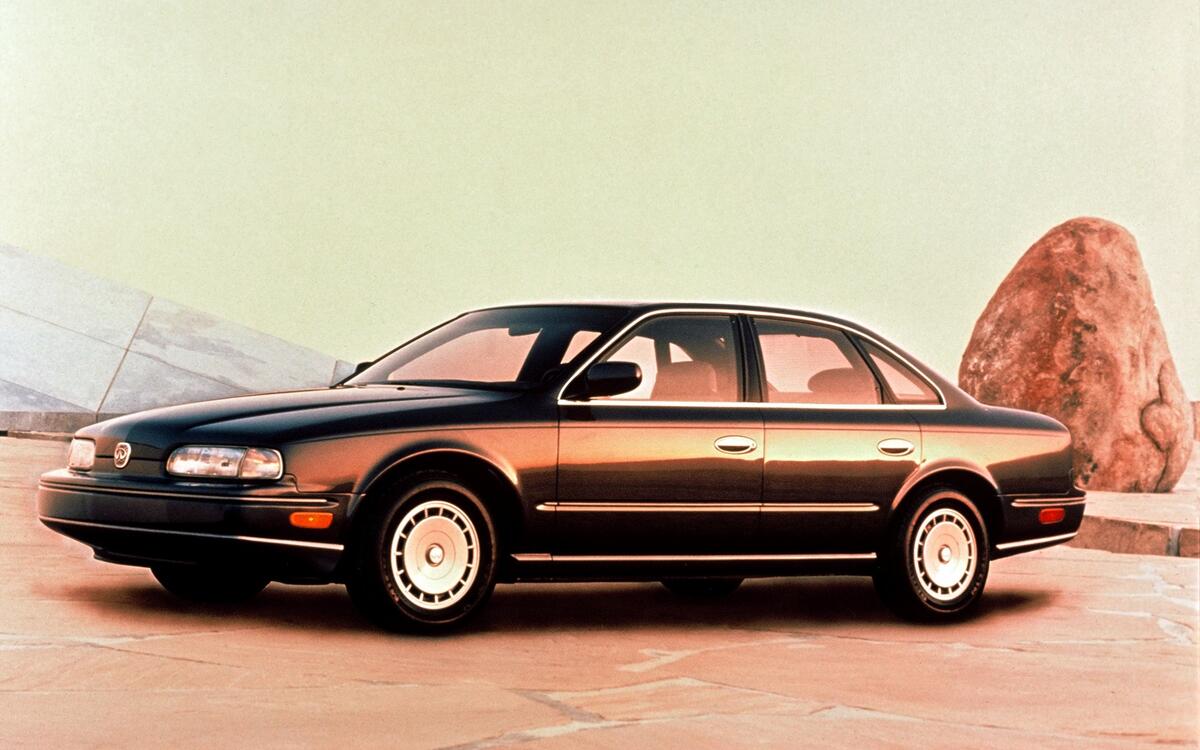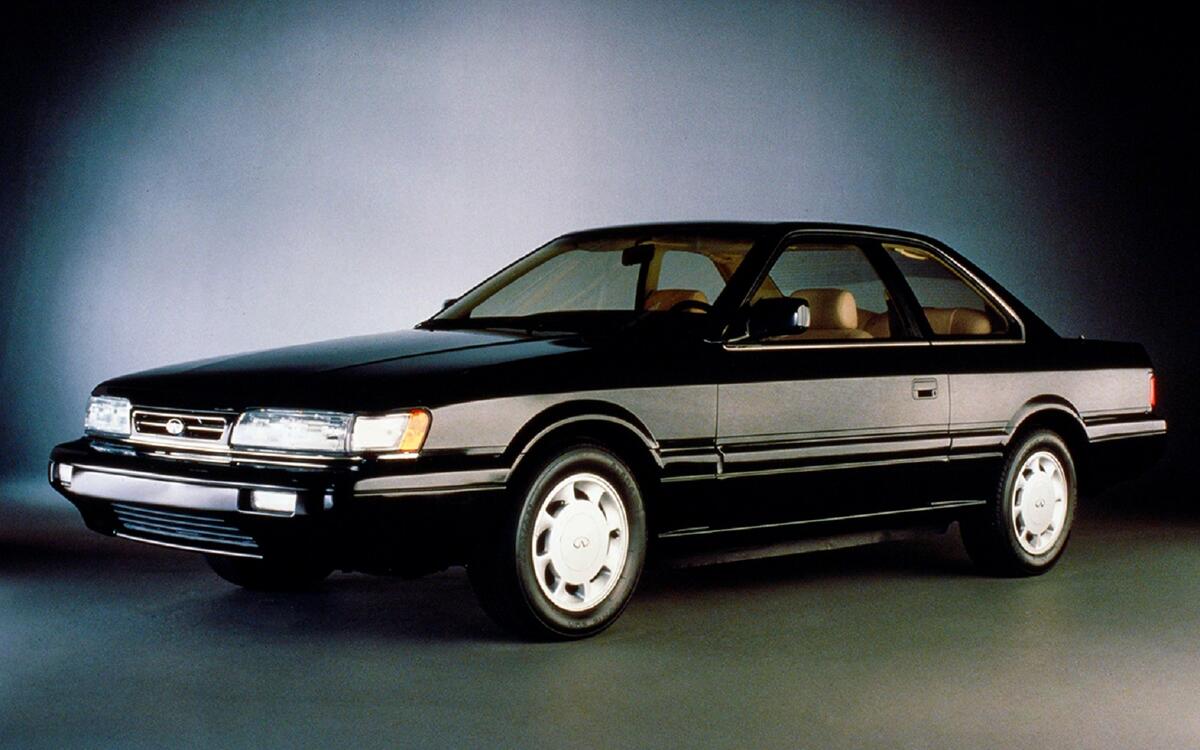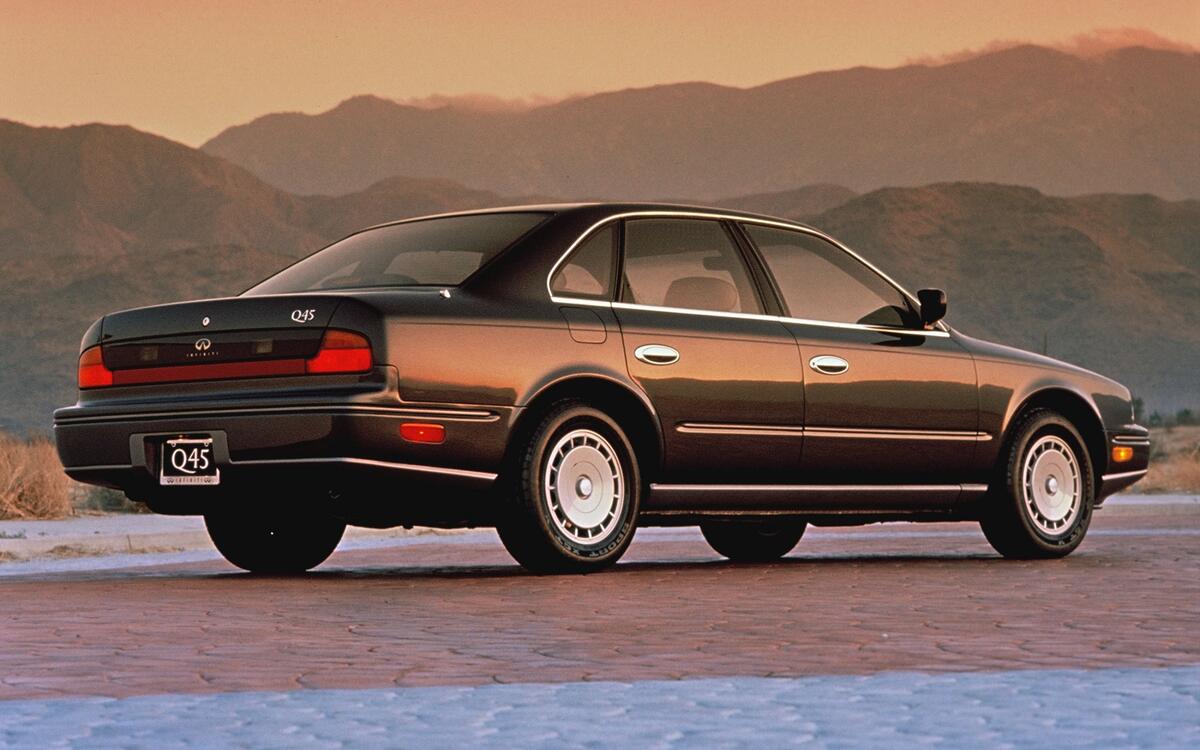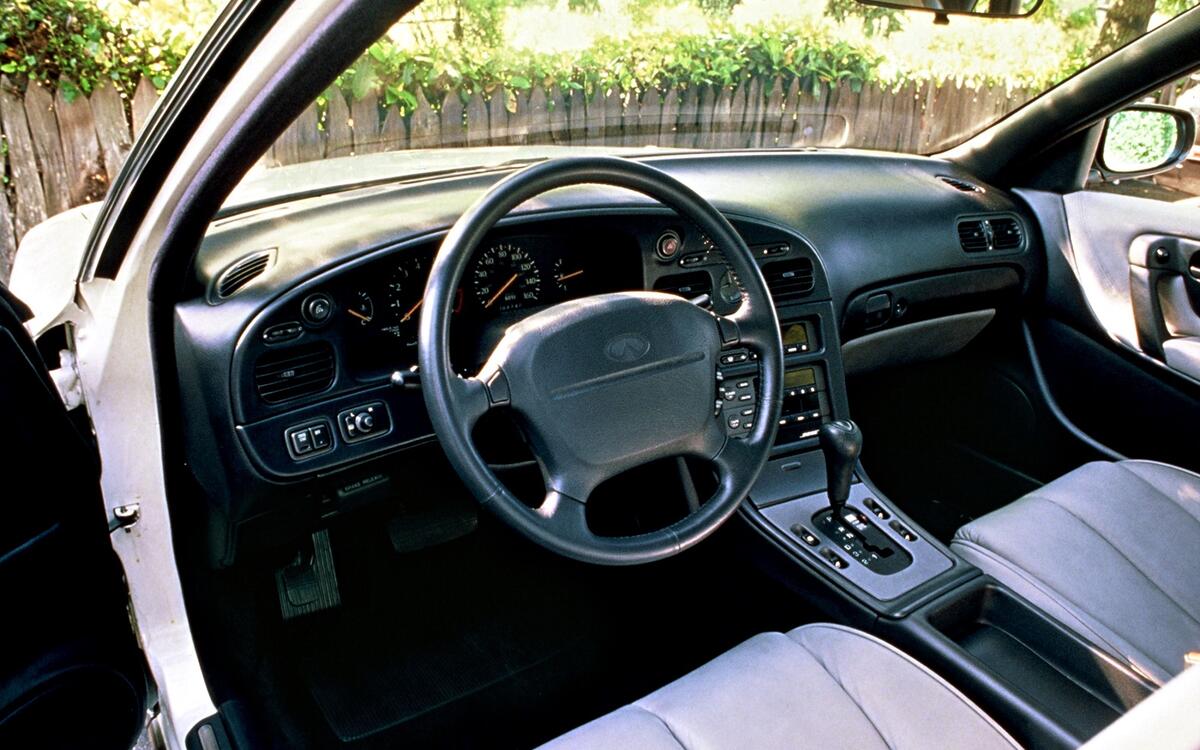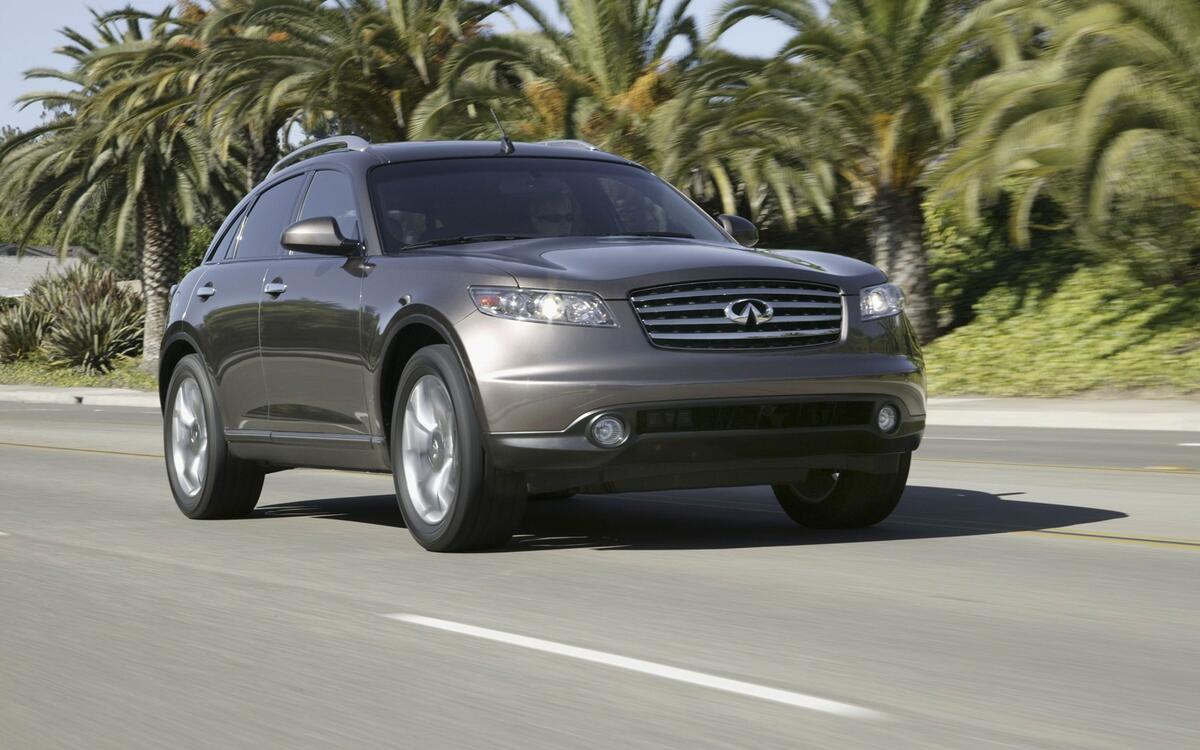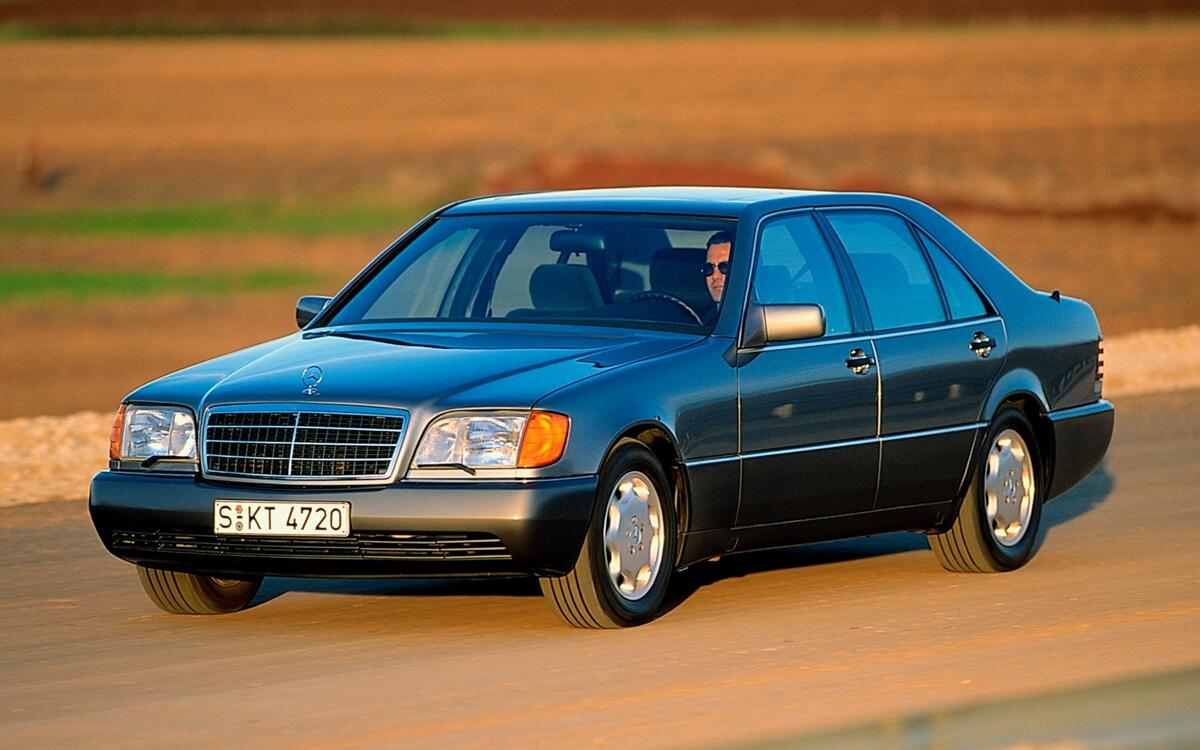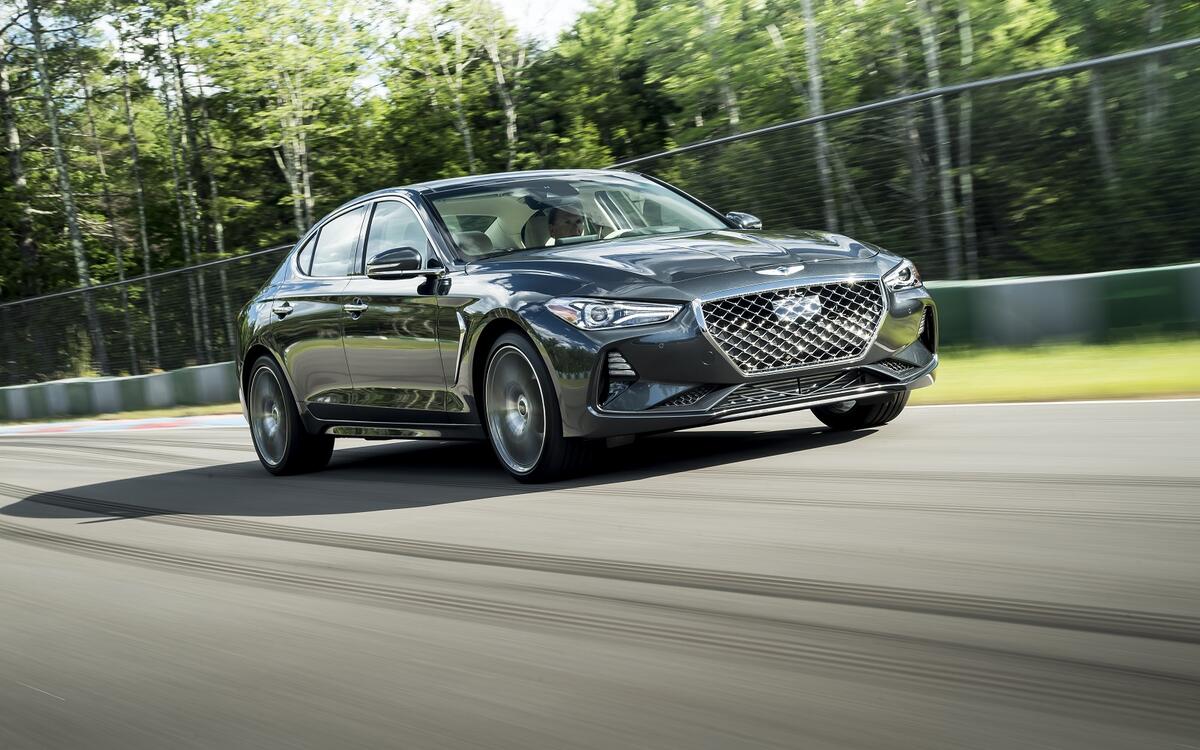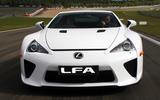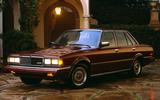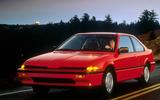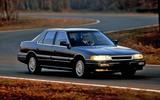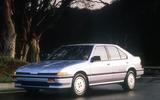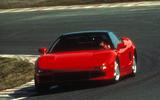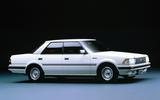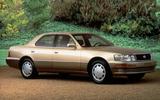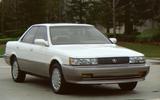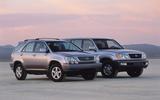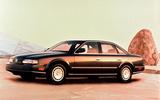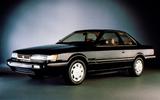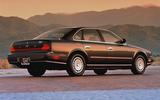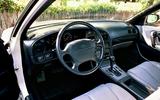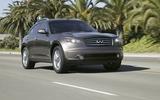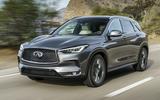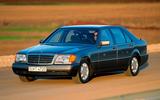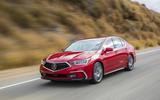 Slide of
Slide of
Japan’s largest auto-makers adapted to the US market in record time.
They went from peddling small, unoriginal cars often ill-suited to the needs of American motorists to challenging Germany’s most respected names on the highest rungs of the market. Here is how – and why – Honda, Toyota, and Nissan gained a secure foothold in America’s lucrative luxury car segment and some of the highlights from their meteoric rise.
 Slide of
Slide of
The Plaza Accord (1985)
Above all, Japan’s auto-makers wanted to capitalize on America’s growing appetite for luxury cars. Creating luxury divisions also helped them move beyond the turmoil caused by the Plaza Accord that Germany, Japan, France, the UK and the US signed in 1985. The five countries agreed to artificially devalue the US dollar in order to reduce America’s trade deficit.
As a result, the yen’s value nearly doubled in the two years after the Plaza Accord took effect. Japanese auto-makers were forced to raise prices in America. Moving into the luxury segment, where profit margins were fatter, helped improve their competitiveness.
Note: Toyota Cressida pictured.
 Slide of
Slide of
The Acura story: Channel II (1984)
In the late 1970s, Honda began studying ways to move upmarket in the US. It made the project public in 1984. At the time, it called its upcoming luxury division Channel II, a name which hinted the company needed to operate as an independent alternative to Honda. It announced the Acura name a few months later, though the firm’s badge didn’t appear until the 1991 model year.
Note: Acura Integra pictured.
 Slide of
Slide of
Japan’s first luxury car brand (1986)
Acura’s newly-assembled team of executives meticulously planned an American offensive. The brand opened a network of 60 dealers located in the 30 largest new car markets in the US. Sales started in March 1986 with two models called Integra and Legend, respectively.
The Legend (pictured) stemmed from a joint-venture Honda created with Austin Rover in 1981 and it shared some components with Rover’s 800-series model. The two cars somewhat ironically competed against each other in the US, where Rover briefly sold the 800 under the ill-fated Sterling brand. The Integra started life in Japan as the 1985 Honda Quint Integra.
 Slide of
Slide of
Acura’s early models by the number (1987)
In 1987, the sporty, 113hp Integra started at $9859 when ordered with two doors. Buyers who wanted a four-door model (pictured) needed to spend at least $10,559. The Legend, a V6-only four-door model positioned as Acura’s flagship, cost $19,898. Acura later introduced a Legend coupe priced at $22,458*. Acura’s bet paid off. It sold 52,869 cars on the US market in 1986 and 109,470 cars the following year.
*Note: the aforementioned price figures represent approximately $21,900, $23,400, $44,100, and nearly $50,000, respectively, in 2018 dollars. To add context, the cheapest Acura offered in 2018 is the ILX, which starts at $28,100. The flagship RLX costs $61,900.
 Slide of
Slide of
The NSX (1989)
Japan’s luxury offensive focused on volume segments like passenger cars and coupes. Acura went a step further when it introduced the New Sportscar-eXperimental (NS-X) concept during the 1989 Chicago auto show. Though Japanese brands had built sports cars before, the NS-X boldly took the fight directly to big names like Ferrari, Porsche and Lamborghini.
NSX sales started in 1990. Sold as a Honda in Europe and in Japan, the aluminum-bodied coupe joined the Acura line-up in the US in a bid to give the brand a publicity boost. Pricing started at $65,000 (about $125,300 in 2018), a figure that made it the most expensive new Japanese car in history. The born-again 2018 model carries the torch with a base price of $156,000.
 Slide of
Slide of
The MDX (2000)
The NSX did great things for Acura’s image in the US but it’s the MDX that firmly cemented its spot as a major player in the luxury segment. Showing a surprising amount of foresight, Acura designed the MDX in-house with a major emphasis on the American market. It came standard with a third-row seat, a rare option in the burgeoning SUV segment, plus independent front and rear climate control systems.
 Slide of
Slide of
The Lexus story: Circle F (1983)
In the 1980s, Toyota felt ready to move into the luxury car segment in the US but it didn’t know how. It couldn’t sell the Century across the Pacific because the hand-built limousine would have cost far too much. Company officials nearly settled for re-introducing the Crown (pictured) to the American market but they concluded it was too small and not powerful enough to credibly compete against cars made by Mercedes-Benz and BMW.
They instead launched the process of developing the original Lexus LS by forming a team called Circle F in August 1983. It operated in complete secrecy in order to catch the Germans – and, as it turned out, the Japanese – off guard.
 Slide of
Slide of
The LS takes shape (1984)
Circle F boss Ichiro Suzuki could spend as much as necessary to beat Mercedes-Benz at its own game. He hired a total of 60 designers, 1400 engineers split into 24 teams, 2300 technicians and over 200 support workers, according to Toyota’s archives department.
Toyota built the first LS prototype in 1985 and stylists locked in the final design two years later. Officials still aimed to launch the model as a Toyota but years of research carried out on the American market convinced them to create a standalone brand. Toyota stood for value, not luxury. The firm’s marketing department rightly argued US buyers wouldn’t spend Mercedes money on a Toyota.
Company officials vetted a list of 219 names provided by a consulting company including Vectre, Verone, Chaparel, Calibre and Alexis before settling on Lexus.
 Slide of
Slide of
Lexus’ global debut (1989)
Toyota introduced the Lexus brand by unveiling the LS 400 and a smaller, badge-engineered Camry named ES 250 (pictured) in January 1989 at the Detroit auto show. LS sales began in August 1989 with a shipment of 1000 cars that were spoken for in record time. The ES arrived the following month. Lexus sold 16,000 cars in America by the end of 1989.
 Slide of
Slide of
Lexus’ early models by the numbers (1991)
For the 1991 model year, the ES 250 carried a base price of $21,300. In comparison, the V6-powered Toyota Camry started at $12,588 that same year. The V8-only LS 400 cost $38,000*. Lexus replaced the original ES with an improved, less Camry-like second-generation model called ES 300 (pictured) in late 1991. It became Lexus’ best-selling model during the 1990s.
*Note: The aforementioned price figures represent about $39,400, $23,300, and $70,300, respectively, in 2018 dollars. Lexus still makes the ES and the LS in 2018. The ES starts at $38,950 and the cheapest LS retails for $75,000.
 Slide of
Slide of
Line-up expansion (1990s)
Lexus expanded its line-up faster than Acura and Infiniti. Its portfolio included seven nameplates by the end of the 1990s. It ranged from the IS, a compact model aimed right at the BMW 3 Series and the Audi A4, to the second-generation LS. It also included the Toyota Land Cruiser-based LX, the popular RX SUV (pictured) and a luxurious coupe named SC.
Its investment paid off. Annual sales crossed the 200,000 mark for the first time in 2000. Lexus finished the year ahead of Cadillac and BMW and only 153 units behind Mercedes-Benz. Sales jumped to nearly 224,000 units in 2001 while Mercedes stagnated at under 206,000. 12 years after its inception, Lexus reached its goal of becoming the best-selling luxury brand in the US.
 Slide of
Slide of
The LFA (2009)
Lexus proved it knew how to make a luxury car at least as well as the Germans but still lagged behind in the performance department. Its name was a byword for comfort, dependability and insipidness. It designed the LFA to show its sporty side once and for all.
Engineers started from scratch and ignored costs. The LFA boasted a carbon fiber chassis and a 552hp V10 engine developed jointly by Toyota and Yamaha. Lexus capped production at 500 units over a two-year run and, somewhat surprisingly, it has never used any of the car’s major components in another model. It decided to keep the total cost of the project secret.
 Slide of
Slide of
The Infiniti story: The Horizon Task Force (1985)
In 1985, Nissan assembled a top-secret team called Horizon Task Force and asked it to lay the foundations of a brand-new luxury automaker. After quickly identifying the US as its main market, the Horizon Task Force outlined an initial portfolio made up of a luxurious, range-topping four-door model and a sporty two-door offered as a coupe and, later, a convertible.
Note: Infiniti Q45 pictured.
 Slide of
Slide of
Launching Infiniti (1987)
Nissan announced the Infiniti name and showed the company’s newly-minted oval logo in July 1987. Sales began on 8 November 1989 through a network initially made up of 51 dealers scattered across the US. Its line-up for the 1990 model year included two models called Q45 and M30 (pictured), respectively.
 Slide of
Slide of
Two very different cars (1989)
The Q45 (pictured) was a ground-breaking, over-engineered luxury car. Related to the Nissan President, it immediately stood out with a smooth, grille-less front end fitted with an intricately-designed emblem inspired by Japanese art techniques. Buyers could pay extra for four-wheel steering and Infiniti later added an active suspension to the list of options.
The M30, on the other hand, was visibly based on the second-generation Leopard that Nissan began selling in Japan in 1986. It carried far less prestige than the Q45. Behind the scenes, officials knew the M30 was a temporary addition to the Infiniti line-up. It merely needed to accompany the Q45 until newer models arrived in the early 1990s.
 Slide of
Slide of
Infiniti’s early models by the numbers (1991)
For the 1991 model year, the Infiniti Q45 cost an even $40,000 ($74,000 in 2018). It offered a 278hp V8 as its only engine option. Buyers who wanted to spend $40,000 on a Mercedes-Benz could drive home in an entry-level, W124-generation 300E powered by a 2.6-liter straight-six engine rated at 158hp. Alternatively, BMW charged $42,900 for a 535i with 208hp. Infiniti clearly played the power card.
The M30 cost $24,000 as a coupe and $31,100* as a convertible.
*Note: The aforementioned price figures represent $44,400 and $57,500, respectively, in 2018 dollars. Infiniti’s flagship four-door car, the long-wheelbase Q70 L, starts at $51,800 in 2018. Its most expensive model is the QX80, a body-on-frame SUV priced at $64,750. The Q60 coupe costs $39,950 and Infiniti no longer makes a convertible.
 Slide of
Slide of
The FX (2003)
Infiniti’s first SUV, the QX4, was a badge-engineered Nissan Pathfinder that did little to hide its roots. The firm performed a volte-face. It went back to the drawing board and developed a brand-new model named FX that shared its rear-wheel drive platform and its V6 engine with a completely different kind of Nissan: the 350Z.
The FX stood out with a long front end reminiscent of a sports car and a rakish roof line that accurately previewed the SUV-coupe trend. The FX returned for a second generation in 2008 and became the QX70 when Infiniti introduced a new naming system. Production ended in 2017 without a direct successor in the works.
 Slide of
Slide of
The VC-Turbo engine (2017)
Infiniti sponsored the Red Bull Formula One team but, unlike Lexus and Acura, it has never strayed too far away from the mainstream segments of the market. Instead of chasing all-out performance, the firm poured development dollars into designing and fine-tuning the world’s first variable compression engine. It’s a turbocharged, 2.0-liter four-cylinder unit that automatically adjusts its compression ratio to balance efficiency and power. It delivers 268hp yet uses 25% less fuel than a comparable V6, according to the firm.
‘Impressively, you won’t notice the variable compression switching, unless you’re looking at the small information display’, Autocar wrote after testing a QX50 prototype equipped with the VC-Turbo engine. Other Infiniti models will soon benefit from the technology.
 Slide of
Slide of
Putting Mercedes-Benz on notice
Japan’s luxury car push upended the entire segment. Mercedes-Benz made numerous last-minute changes to the W140-generation S-Class (pictured) in order to better compete against the Lexus LS. Broadly speaking, it also started developing its cars to a price point, not strictly to a quality standard. In turn, this new approach partly caused the mechanical problems the German firm’s cars often experienced during the 1990s and early 2000s.
 Slide of
Slide of
2017 results
Acura sold 154,602 cars in America in 2017. It’s the only major Japanese luxury brand that hasn’t expanded its presence to Europe. The company told Autocar it prefers to focus on the American market and it’s not planning on sailing across the Atlantic anytime soon.
In 2017, Lexus’ American division sold 305,132 cars. It’s the number-three luxury brand in the US behind Mercedes-Benz (337,246 units) and BMW (305,685 units) but ahead of Audi (226,511) and its Japanese competitors. Jaguar is dead last with 39,594 units.
Finally, Infiniti’s American dealers sold 153,415 cars in 2017. It’s the smallest of Japan’s three luxury brands by a thin margin. Things are looking up, though. It posted a 10.9% increase in sales while Acura and Lexus declined by 4.2% and 7.9%, respectively.
Note: 2018 Acura RLX pictured.
 Slide of
Slide of
South Korean competition (2018 and beyond)
In 2015, South Korea’s Hyundai followed the path blazed by its Japanese competitors during the 1980s and created a standalone luxury division named Genesis. Speaking after the announcement, company executives voiced their intent to take on the world’s most renowned car brands. They also promised to introduce six new cars by 2020.
As of 2018, the company’s line-up consists of three cars named G70 (pictured), G80 and G90, respectively. The list of future models includes at least two SUVs and a coupe.
Here's how - and why - Lexus nearly outsold BMW in America in 2017
Advertisement


